Cern plans even larger hadron collider for physics search
- Published
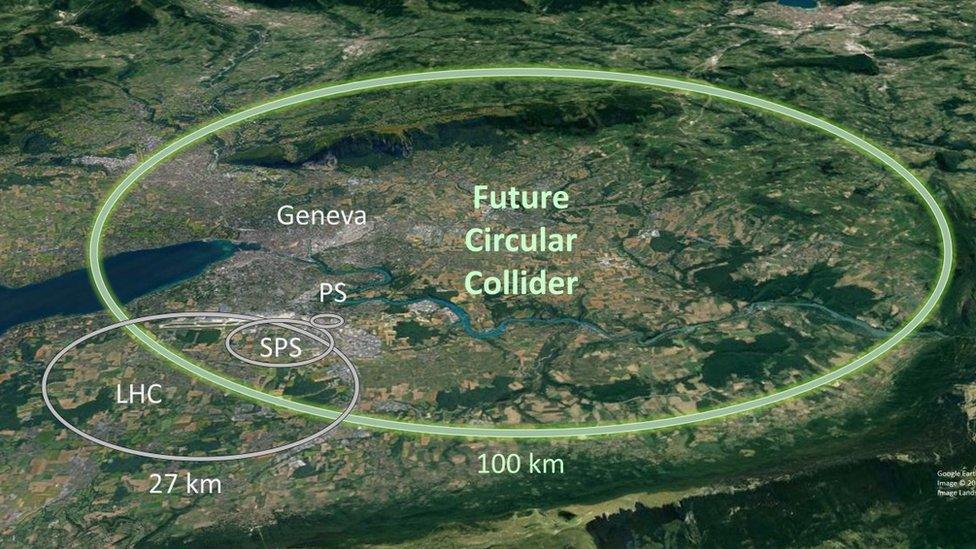
The Future Circular Collider is four times the circumference and ten times the power of the current collider
Cern has published its ideas for a £20bn successor to the Large Hadron Collider, given the working name of Future Circular Collider (FCC).
The Geneva based particle physics research centre is proposing an accelerator that is almost four times longer and ten times more powerful.
The aim is to have the FCC hunting for new sub-atomic particles by 2050.
Critics say that the money could be better spent on other research areas such as combating climate change.
But Cern's Director-General, Prof Fabiola Gianotti described the proposal as "a remarkable accomplishment".
"It shows the tremendous potential of the FCC to improve our knowledge of fundamental physics and to advance many technologies with a broad impact on society," she said.
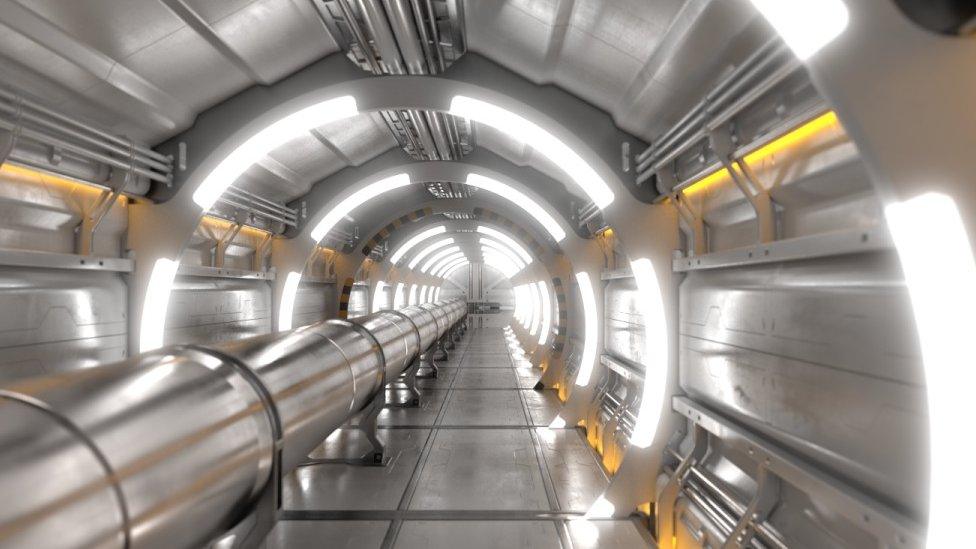
An artists impression of what the FCC beam line will look like.
Cern's plans have been submitted in a conceptual design report, external. These will be considered by an international panel of particle physicists, along with other submissions, as they draw up a new European strategy for particle physics, external for publication in 2020.
Prof Jon Butterworth of University College, London is among those drawing up the strategy. He told BBC News that, although he was keeping an open mind, he was particularly attracted to Cern's proposal.
It entails gradually building up to a 100km ring that is almost ten times more powerful than the LHC.
"This programme is very ambitious, very exciting and would be my plan A," he said.

Cern engineers are already building and testing prototype components capable of working at the FCC's higher energies.
The proposal involves digging a new tunnel under Cern and then installing a ring that would initially collide electrons with their positively charged counterparts, positrons.
Stage two would involve colliding protons with electrons.
Stages one and two would lay the ground for the final step of colliding protons together nearly ten times harder than they have been by the LHC.
New discoveries
Physicists hope that such collisions at these unprecedented high energies will reveal a new realm of particles that really make the Universe tick, rather than the sub-atomic pretenders we know of, which play only a part in mediating the forces of nature.
The current theory of sub-atomic physics, called the Standard Model, has been one of the great triumphs of the 20th century.
It neatly explains the behaviour of matter and forces through the interaction of a family of 17 particles. The last of these, the Higgs Boson, was discovered by the Large Hadron Collider in 2012.
But observations by astronomers indicated that there was more to the Universe than could be explained by the Standard Model. Galaxies were rotating faster than they should be and the expansion of the Universe is accelerating rather than slowing down. On top of that, the Standard Model cannot explain gravity.
So there must be a deeper process going on, involving yet to be discovered particles. Uncovering them would provide physicists with their much sought after theory of everything, one that would tie together all the forces of nature and unify the twin pillars on which modern physics rests: general relativity and quantum mechanics.
When physicists first proposed the construction of the LHC they knew that if the Standard Model was correct it would be capable of discovering the Higgs.
They had hoped that it might also discover particles beyond the standard model.
So far it has failed to do so.
The difficulty with Cern's proposals for a larger Large Hadron Collider is that no one knows what energies will be needed to crash hadrons together to discover the enigmatic, super particles that hold the keys to the new realm of particles.
Cern hopes that its step-by-step proposal, first using electron-positron and then electron-large hadron collisions will enable its physicists to look for the ripples created by the super particles and so enable them to determine the energies that will be needed to find the super particles.
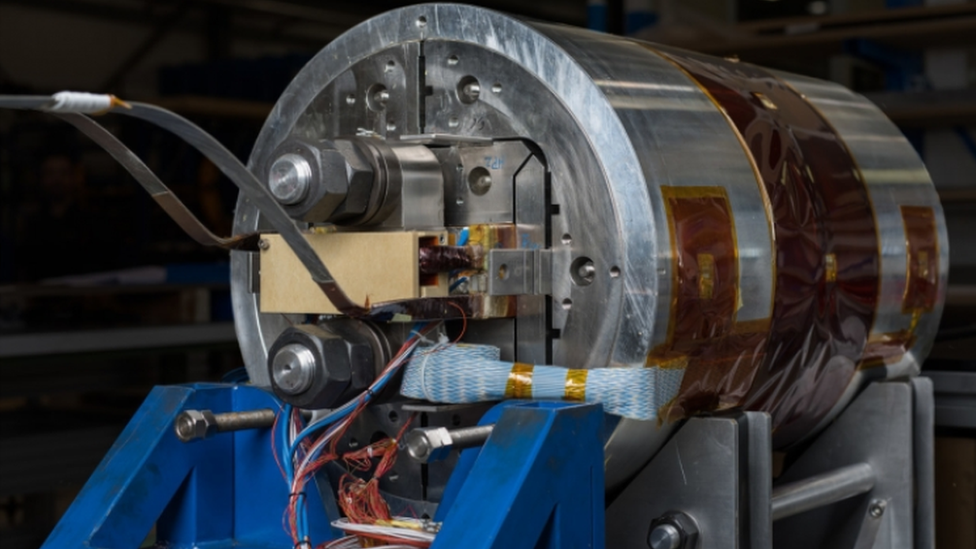
New, more powerful magnets capable of bending the FCC's more powerful beam are being developed at Cern.
Perhaps because of media hype, national governments and taxpayers had expected the LHC to have already found particles beyond the standard model. So a new request for a larger accelerator risks creating the impression that the physics community's desire for ever larger, more expensive accelerators to solve the mysteries of the Universe is potentially as limitless as the Universe itself.
Costs and benefits
The UK's former Chief Scientific Advisor, Prof Sir David King, has advised the UK government and the European Commission on large funding requests.
He told BBC News that he believed that the escalating costs of conducting basic research in particle physics means that it is now time to carry out a cost-benefit analysis, especially when it was unclear whether the £20bn machine would discover any new particles.
"We have to draw a line somewhere otherwise we end up with a collider that is so large that it goes around the equator. And if it doesn't end there perhaps there will be a request for one that goes to the Moon and back."
"There is always going to be more deep physics to be conducted with larger and larger colliders. My question is to what extent will the knowledge that we already have be extended to benefit humanity?"
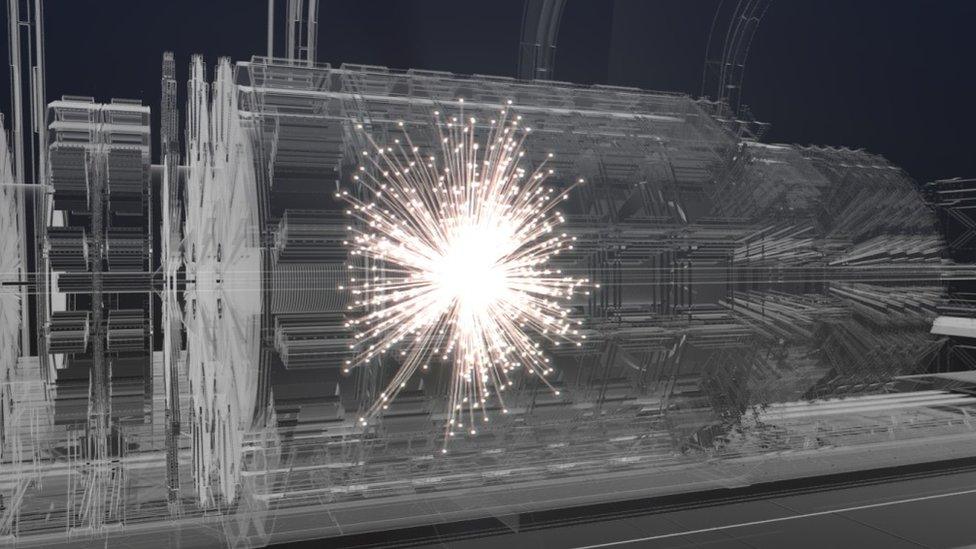
A simulation of the high energy collisions that will take place in the FCC.
Prof King believes that governments should consider if the money could be better spent on research into other, more pressing priorities.
"We are rattling towards a high temperature planet in which the current global economy will cease to operate. More than 150 million people will be displaced. So if we had a pot of £20bn and we were discussing what to do with it, we would be faced with people in the medical sciences community coming up to us with ideas to improve human health and wellbeing."
"But I'm going to say a new high priority for human beings is now dealing with climate change."
What is bosonics?
However Cern's director for accelerators and technology, Dr Frédérick Bordry, said that he did not think that £20bn was expensive for a cutting edge project, the cost of which would be spread among several international partners over 20 years.
He added that spending on Cern had led to many technological benefits, such as the World Wide Web and the real benefits were yet to be realised.
"When I am asked about the benefits of the Higgs Boson, I say 'bosonics'. And when they ask me what is bosonics, I say 'I don't know'.
"But if you imagine the discovery of the electron by JJ Thomson in 1897, he didn't know what electronics was. But you can't imagine a world now without electronics."
Follow Pallab on Twitter, external
- Published15 June 2018
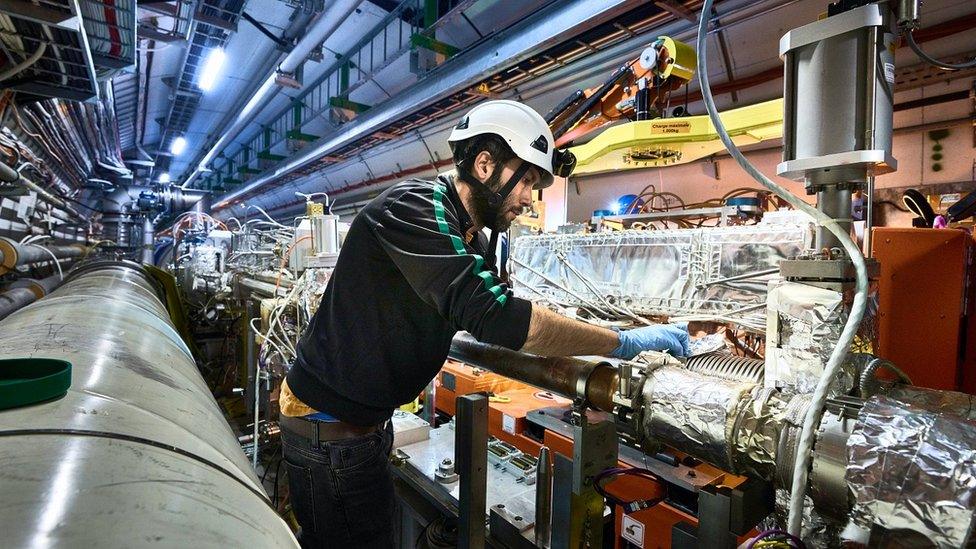
- Published5 April 2015
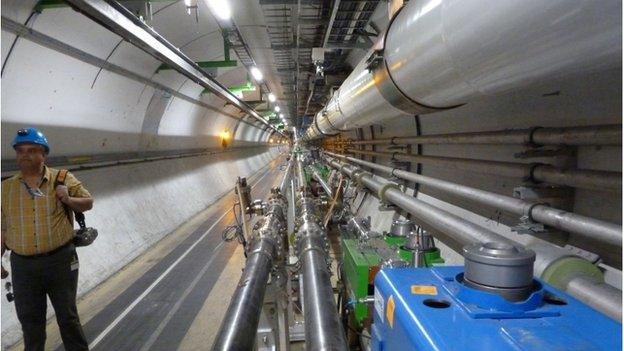
- Published27 August 2011
